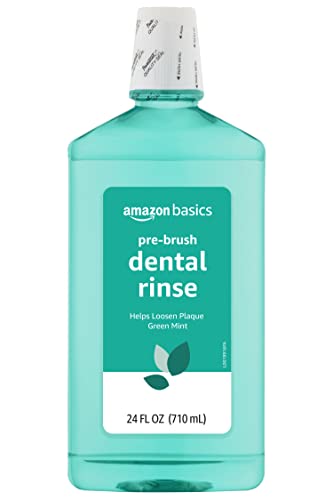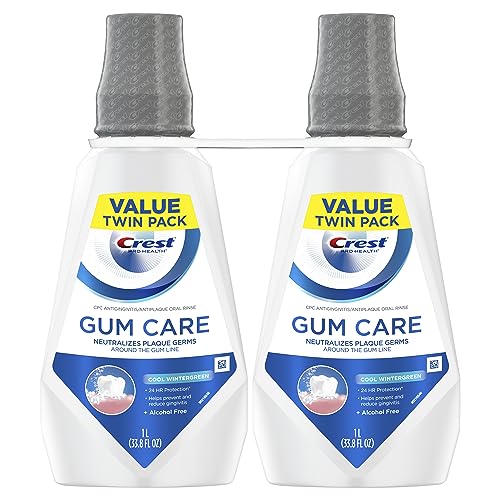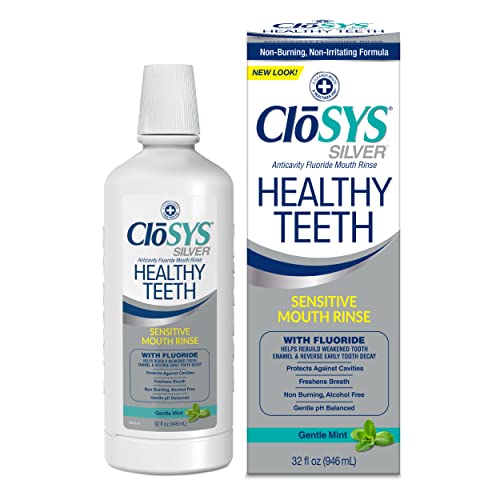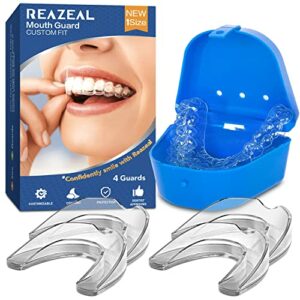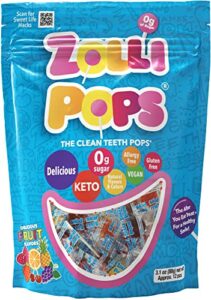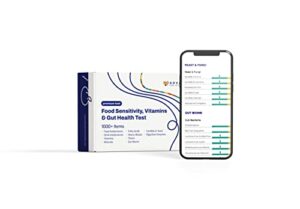Are you tired of feeling frustrated every time you visit the dentist and hear those dreaded words, “You have plaque buildup”? We understand the struggle all too well. That’s why we are here to help you take control of your oral health with our latest blog post: “Tips and Tricks for Maximizing the Plaque-Fighting Power of Mouthwash.” In this post, we will share valuable insights and techniques to ensure that you are getting the most out of your mouthwash in the battle against plaque. Because we believe that everyone deserves a dazzling smile and a healthy mouth, join us as we uncover the secrets to achieving optimal oral hygiene. Let’s dive in!
Achieve a Healthy Smile with the Bestselling Mouthwashes for Plaque Control
Choosing the Right Mouthwash
Maintaining good oral hygiene goes beyond just brushing and flossing. Incorporating mouthwash into your oral care routine can provide additional benefits by targeting areas that are hard to reach with a toothbrush or dental floss. However, not all mouthwashes are created equal, and choosing the right one can make a significant difference in your oral health. In this section, we will discuss the importance of selecting the right mouthwash for maximum plaque-fighting power and provide valuable tips on what to look for.
Why is Choosing the Right Mouthwash Important?
- Plaque Control: Mouthwash can help reduce plaque buildup, which is a sticky film of bacteria that forms on teeth and gums. By selecting the right mouthwash, you can enhance your plaque control efforts and improve your overall oral health.
- Fresh Breath: Mouthwash can provide a refreshing feeling and help combat bad breath caused by bacteria. Choosing a mouthwash with antibacterial properties can effectively neutralize odors, leaving you with fresh breath throughout the day.
- Preventing Gum Disease: Some mouthwashes contain antiseptic ingredients that can help prevent gum disease, such as gingivitis. By using an appropriate mouthwash, you can enhance your gum health and reduce the risk of developing oral health issues.
What to Look for in a Mouthwash
Active Ingredients
When choosing a mouthwash, it’s essential to consider the active ingredients. Here are some key ones to look for:
- Fluoride: Mouthwashes containing fluoride can help strengthen tooth enamel and prevent tooth decay. This is particularly important if you are at a higher risk for cavities.
- Antiseptics: Mouthwashes with antiseptic properties, such as chlorhexidine or cetylpyridinium chloride, can effectively reduce bacteria in the mouth, preventing gum disease and bad breath.
- Essential Oils: Some mouthwashes contain essential oils like eucalyptol, menthol, or thymol, which have antimicrobial properties. These oils can help freshen breath and inhibit bacterial growth.
Alcohol-Free Options
Many mouthwashes contain alcohol, which can cause dryness and irritation in some individuals. If you are prone to dry mouth or have sensitive gums, opting for an alcohol-free mouthwash can be a more comfortable and effective choice.
ADA Seal of Acceptance
The American Dental Association (ADA) evaluates oral care products for safety and effectiveness. Choosing a mouthwash with the ADA Seal of Acceptance ensures that it has met strict standards and is a reliable option for your oral health needs.
Choosing the Right Mouthwash: Summary
- Look for active ingredients like fluoride or antiseptic properties to target specific oral health concerns.
- Consider alcohol-free options for individuals with dry mouth or sensitive gums.
- Opt for mouthwashes with the ADA Seal of Acceptance to ensure safety and effectiveness.
By carefully selecting the right mouthwash, you can enhance your oral hygiene routine and take proactive steps towards achieving optimum oral health. Don’t forget to consult with your dentist or dental hygienist for personalized recommendations based on your specific needs. Remember, a little attention to detail in choosing the right mouthwash can go a long way in maintaining a healthy smile!
Proper Technique for Using Mouthwash
Using mouthwash is an important step in maintaining good oral hygiene. It helps kill bacteria, freshens breath, and promotes overall oral health. However, simply rinsing your mouth with mouthwash is not enough. To ensure maximum effectiveness, it’s crucial to use the proper technique. In this blog post, we will outline the correct way to use mouthwash, including how long to swish, how to avoid dilution, and why it should be used in conjunction with regular brushing and flossing.
Step 1: Choose the Right Mouthwash
Before diving into the technique, it’s essential to select the right mouthwash for your specific needs. There are various types available in the market, such as fluoride mouthwashes for cavity prevention, antiseptic mouthwashes for killing bacteria, and mouthwashes for sensitive teeth and gums. Consider consulting with your dentist to determine which mouthwash is best suited for your oral health requirements.
Step 2: Measure the Proper Amount
Many people tend to use excessive amounts of mouthwash, which can be wasteful and potentially harmful. It’s important to refer to the instructions on the bottle and measure the appropriate amount. Typically, a capful or 20 milliliters is sufficient for most mouthwashes.
Step 3: Time to Swish
Once you have the right amount of mouthwash, it’s time to swish! Follow these steps for effective swishing:
- Pour the measured mouthwash into your mouth without diluting it with water.
- Close your mouth and tilt your head back slightly to prevent the mouthwash from spilling out.
- Swish the mouthwash around your entire mouth, making sure to reach all areas, including the front, back, and sides of your teeth and gums.
- It is recommended to swish for a minimum of 30 seconds, although some mouthwashes may have specific instructions for a longer duration. Refer to the label for guidance.
- Do not swallow the mouthwash. Spit it out into the sink after swishing.
Step 4: Rinse and Repeat
After spitting out the mouthwash, rinse your mouth with water to remove any residual solution. This step helps eliminate any lingering taste or sensation. It’s important to note that rinsing with water should be done separately from the mouthwash swishing process.
Step 5: Brush and Floss
Using mouthwash should never replace regular brushing and flossing. Mouthwash is a supplementary step to enhance your oral hygiene routine, not a substitute for brushing and flossing. To maintain optimal oral health, continue to brush your teeth at least twice a day with fluoride toothpaste and floss daily. Incorporating mouthwash into this routine will help provide comprehensive oral care.
Benefits of Using Mouthwash
Using mouthwash correctly offers several benefits for your oral health:
- Kills bacteria: Mouthwash containing antiseptic properties can help kill harmful bacteria that cause bad breath and dental issues.
- Freshens breath: Mouthwash helps eliminate foul-smelling breath by neutralizing odor-causing bacteria.
- Prevents cavities: Fluoride mouthwashes can strengthen tooth enamel, making it more resistant to decay.
- Reduces plaque and gum disease: Certain mouthwashes can help control plaque buildup and reduce the risk of gum disease.
- Reaches inaccessible areas: Swishing mouthwash can reach areas that a toothbrush and floss may miss, providing a more thorough clean.
Remember, incorporating mouthwash into your daily oral hygiene routine, along with proper brushing and flossing, is key to maintaining a healthy smile.
Disclaimer: This blog post is for informational purposes only and should not be considered professional dental advice. Always consult with your dentist or oral health professional for personalized recommendations and guidance.
Timing your Mouthwash Routine
Maintaining good oral hygiene involves more than just brushing your teeth. Incorporating mouthwash into your daily routine can provide additional benefits in the fight against plaque and gingivitis. However, to maximize the effectiveness of your mouthwash, it’s essential to consider the timing of its use. In this blog section, we will guide you on when to use mouthwash and how to integrate it seamlessly into your oral care routine.
Before or After Brushing: The Great Debate
One of the most common questions when it comes to mouthwash is whether to use it before or after brushing your teeth. The answer may surprise you – it actually depends on the type of mouthwash you are using.
Before Brushing
Using mouthwash before brushing can help to loosen plaque and food particles, making them easier to remove during brushing. This can be particularly beneficial if you struggle with hard-to-reach areas or have braces or other orthodontic appliances. Additionally, mouthwash can freshen your breath and leave your mouth feeling clean and invigorated before brushing.
After Brushing
On the other hand, using mouthwash after brushing can provide an extra layer of protection against plaque and gingivitis. Mouthwash containing fluoride can help to strengthen tooth enamel and protect against cavities. Additionally, using mouthwash as a final step in your oral care routine can leave your mouth feeling refreshed and help to eliminate any remaining bacteria.
Incorporating Mouthwash into Your Daily Routine
To ensure you are reaping the maximum benefits from your mouthwash, it’s important to incorporate it into your daily oral care routine. Here’s a step-by-step guide on how to do it:
- Brush Your Teeth: Start by brushing your teeth thoroughly for two minutes using a fluoride toothpaste. Pay attention to all surfaces of your teeth, including the gumline.
- Floss: Next, floss between your teeth to remove any trapped food particles and plaque. This step is crucial for maintaining healthy gums and preventing gum disease.
- Rinse with Mouthwash: After flossing, rinse your mouth with the recommended amount of mouthwash. Swish it around your mouth for the designated time specified on the product label.
- Spit, Don’t Rinse: After rinsing with mouthwash, spit it out into the sink. Avoid rinsing your mouth with water immediately afterward, as this can dilute the beneficial effects of the mouthwash.
- Follow Up with Oral Care: Finally, avoid eating or drinking for at least 30 minutes after using mouthwash to allow its active ingredients to work effectively. This will give your mouthwash ample time to combat plaque and bacteria.
Benefits of Using Mouthwash
Incorporating mouthwash into your oral care routine can provide a range of benefits, including:
- Fresh Breath: Mouthwash can help to eliminate bad breath caused by bacteria in the mouth.
- Plaque Control: Mouthwash containing antibacterial ingredients can help to reduce plaque build-up and prevent gum disease.
- Cavity Prevention: Mouthwash with fluoride can strengthen tooth enamel, making it more resistant to decay.
- Gum Health: Regular use of mouthwash can aid in maintaining healthy gums and preventing gingivitis.
- Orthodontic Care: Mouthwash can be particularly beneficial for individuals with braces or other orthodontic appliances, as it can help to remove food particles and bacteria from hard-to-reach areas.
In conclusion, timing is crucial when it comes to maximizing the benefits of mouthwash. Whether you choose to use it before or after brushing, incorporating mouthwash into your daily routine can enhance your overall oral health. Remember to follow the recommended usage guidelines and consult your dentist for personalized advice. So, why wait? Start incorporating mouthwash into your daily oral care routine and experience the difference it can make for your smile!
Additional Tips and Tricks
Maintaining good oral hygiene is essential for a healthy smile and fresh breath. While using mouthwash is a great addition to your oral care routine, there are a few additional tips and tricks that can help you get the most out of it. In this blog section, we will discuss some of these tips and tricks, including the use of a tongue scraper, avoiding certain foods or drinks after using mouthwash, and the importance of consistency in your oral care routine.
1. Use a Tongue Scraper
A tongue scraper is a simple but effective tool that can greatly enhance the benefits of mouthwash. The tongue harbors bacteria and food particles that can cause bad breath, and by using a tongue scraper, you can remove these particles and bacteria, leaving your breath fresher and your mouth cleaner. Here’s how to use a tongue scraper effectively:
- Start at the back of your tongue and gently scrape forward, applying light pressure.
- Rinse the scraper after each pass to remove any debris.
- Repeat the process until you have scraped the entire surface of your tongue.
- Finish by rinsing your mouth with mouthwash to further freshen your breath.
2. Avoid Certain Foods or Drinks After Using Mouthwash
While mouthwash can effectively kill bacteria and freshen your breath, it’s important to avoid certain foods or drinks immediately after using it. Some substances can neutralize the benefits of mouthwash or even cause an unpleasant reaction. Here are a few things to avoid:
- Citrus fruits or juices: The acidic nature of citrus can counteract the effects of mouthwash and cause irritation.
- Alcohol-based beverages: Alcohol can reduce the effectiveness of mouthwash and may lead to a burning sensation.
- Hot or spicy foods: These can cause discomfort and potentially interact with the ingredients in mouthwash.
It’s best to wait at least 30 minutes after using mouthwash before consuming these types of foods or drinks to ensure optimal results.
3. Maintain Consistency in Your Oral Care Routine
Consistency is key when it comes to any oral care routine, including the use of mouthwash. To reap the full benefits, it’s important to incorporate mouthwash into your daily routine and use it consistently. Here are a few tips to help you maintain consistency:
- Choose a mouthwash that suits your specific oral health needs, whether it’s for fresh breath, cavity prevention, or gum health.
- Set a specific time each day to use mouthwash, such as after brushing your teeth in the morning or before bed.
- Make it a habit by placing your mouthwash within easy reach of your toothbrush and toothpaste.
- Consider using a mouthwash with a pleasant taste or refreshing sensation to make the experience more enjoyable.
By maintaining consistency, you will enhance the effectiveness of mouthwash and improve your overall oral health.
In conclusion, mouthwash can be a valuable addition to your oral care routine. By following these additional tips and tricks, including using a tongue scraper, avoiding certain foods or drinks after using mouthwash, and maintaining consistency, you can maximize the benefits and achieve a healthier smile and fresher breath. Incorporate these practices into your daily routine and enjoy the confidence that comes with a clean and healthy mouth.
Wrapping up: Enhancing your oral hygiene routine with the right mouthwash techniques
In conclusion, we have discussed several key tips and tricks for maximizing the plaque-fighting power of mouthwash. It is crucial to select the right mouthwash that contains effective ingredients. Additionally, using proper technique, such as swishing for the recommended time and reaching all areas of the mouth, is essential for optimal results. Timing your mouthwash routine after brushing and flossing can further enhance its effectiveness. Lastly, implementing additional tips and tricks, such as avoiding eating or drinking immediately after rinsing and considering alcohol-free options, can also contribute to better oral health. By following these guidelines, we can all ensure that we are getting the most out of our mouthwash and taking proactive steps towards a healthier smile.


